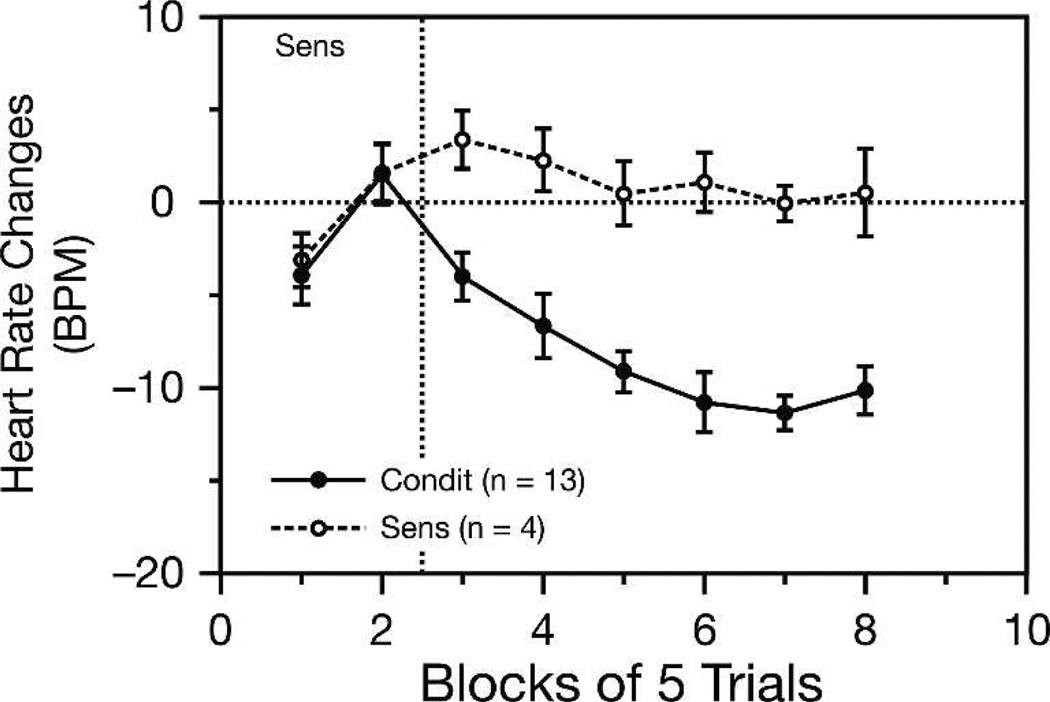Figure 3.
Behavioral verification of associative learning in classical conditioning. Cardiac activity (changes in heart rate to a tone) are shown for two groups of guinea pigs. First, both groups received a tone unpaired with shock for 10 trials (Sens), which resulted in an initial decrease in heart rate during the first block of five trials; this response was no longer present during the second block, perhaps indicating habituation to the tone. Subsequently, one group (Condit) received tone paired with shock, while the other (Sens) continued to receive tone and shock unpaired. Conditioning produced cardiac deceleration CRs as soon as the first block of pairing, which continued to develop across trials. In contrast, the sensitization group showed no such growth of the CR. Such behavioral findings were used to validate the development of a CS−US association, not for purposes of determining CS−CR circuitry (see text).

